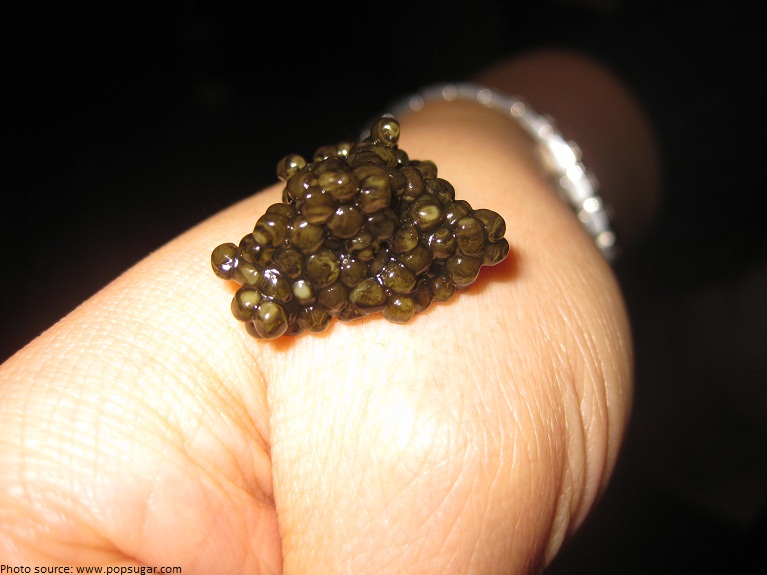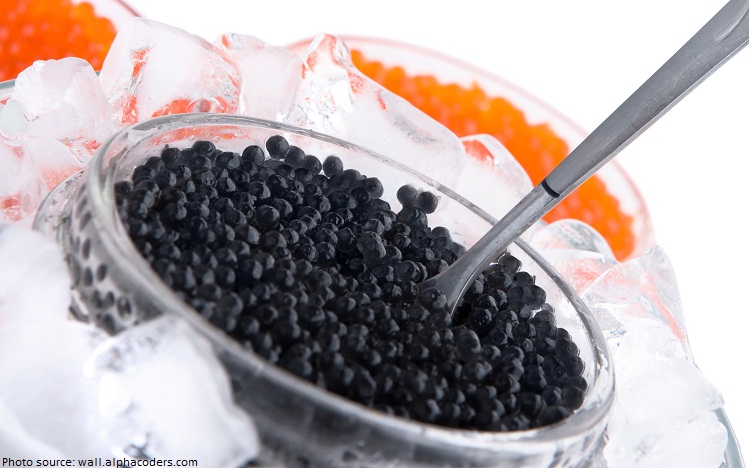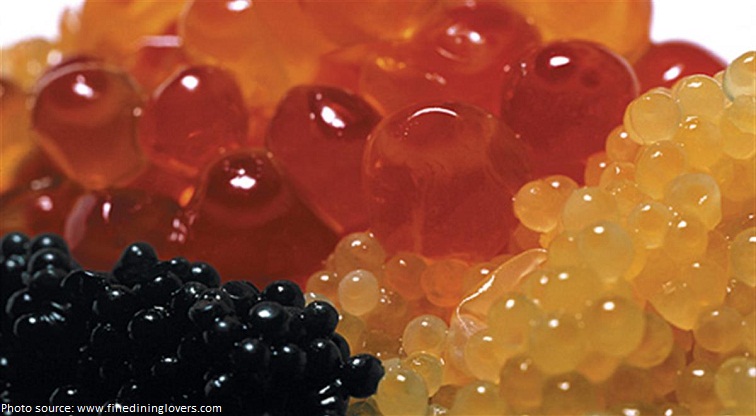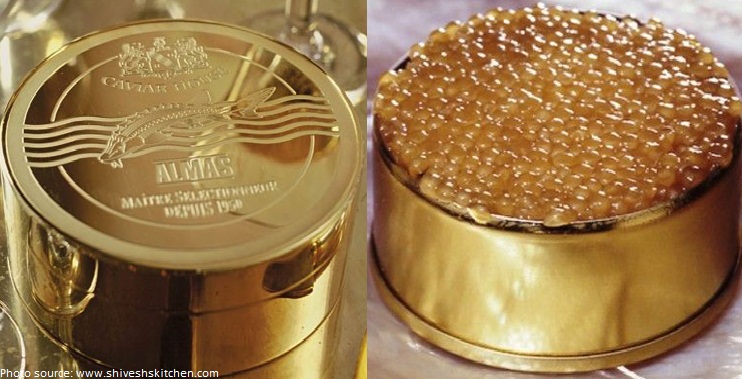Caviar is an expensive delicacy consisting of salt-cured fish-eggs of the Acipenseridae family. The roe can be “fresh” or pasteurized, with pasteurization reducing its culinary and economic value.
The term caviar traditionally refers only to roe from wild sturgeon in the Caspian and Black Sea (Beluga, Ossetra and Sevruga caviars). Depending on the country, caviar may also be used to describe the roe of other fish such as salmon, steelhead, lumpfish, trout, whitefish, and other species of sturgeon.
The word caviar is ultimately derived from Persian khavyar, from khaya meaning “egg.” The word first appeared in English print in 1591.
The four main types of caviar are Beluga, Sterlet, Ossetra, and Sevruga. The rarest and costliest is from beluga sturgeon that swim in the Caspian Sea, which is bordered by Iran, Kazakhstan, Russia, Turkmenistan, and Azerbaijan.
Two major caviar-producing countries are Russia and Iran.
Caviar is traditionally eaten directly from the skin between the index finger and the thumb. The eggs are rolled slowly around the mouth and pop to release the flavour.
You can hear caviar. The friction can be heard when you rub fish eggs together. Good caviar’s sound is clearly distinguishable and sounds like a cat’s purr.
Caviar is one of the oldest delicacies. It came before raw oysters, truffles, and even Champagne. Caviar was sought-after by kings and the aristocracy. Ancient Greeks, Romans and Russian tsars were all known to splurge on caviar.
A record of caviar, eggs of the sturgeon brought into banquets with great fanfare, dates back to the 4th century BC Greek scholar Aristotle.
The preparation of caviar by salting the roe of sturgeon is attributed to the Persians. However, it was Russian tsars who brought caviar into the world of luxury.
The best caviar is served unadorned, and eaten with a non-metal spoon. Traditional caviar spoons are made from mother of pearl, although bone and tortoiseshell material are also used.
Caviar is judged on its colour, flavour, texture and maturity.
The golden Sterlet caviar, the rarest of caviars, was the favorite of tsars, shahs, and emperors.
Today, the highest prices are paid for the Beluga, Ossetra, and Sevruga sturgeon varieties of caviar.
The most expensive of all caviar, and indeed the world’s most expensive food is ‘Almas‘(Beluga caviar), from the Iranian Beluga fish – 1 kilogram (2 lb 3 oz) of this ‘black gold’ is regularly sold for £20,000 (then $34,500). Almas is produced from the eggs of a rare albino sturgeon between 60-100 years old, which swims in the southern Caspian Sea where there is apparently less pollution.~ Guinness Book of Records 2015 ~
There is a new Strottarga Bianco caviar made from rare albino sturgeon eggs and laced with 22-carat gold. The price is about $300,000 for 1 kilogram (2.2 pounds) because the new Strottarga Bianco caviar uses five kilograms of white caviar, which is then dehydrated to make one kilgram of the gold mixture.
Although it is high in sodium and cholesterol, caviar is rich in calcium and phosphorus, as well as protein, selenium, iron, magnesium, and Vitamins B12, B6, B2, C, A and D. It also contains the amino acids argine and histidine, as well as the essentials amino acids lysine, isoleucine, and methonine. One tablespoon of caviar contains a gram of Omega-3 fatty acids which help prevent heart disease.
Historically, caviar was prescribed to alleviate depression.
The Beluga sturgeon is currently considered to be critically endangered, causing the United States Fish and Wildlife Service to ban in 2005 the importation of Beluga caviar which originated in the Caspian Sea and Black Sea basin.
Caviar should never be frozen, as it will end up mushy.
Blinis are yeasted pancakes, traditionally from Russia, and made from buckwheat flour and served with caviar. (You could see it in Barber of Siberia movie)





Comments are closed.